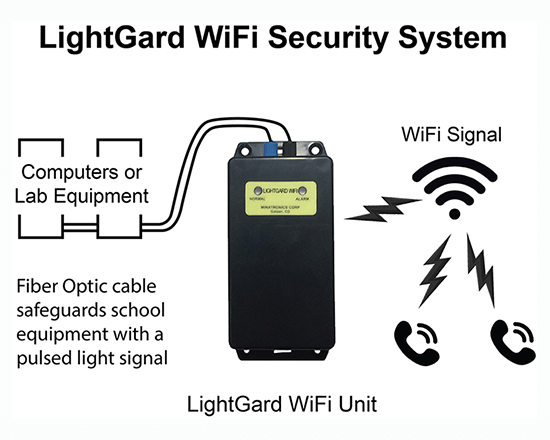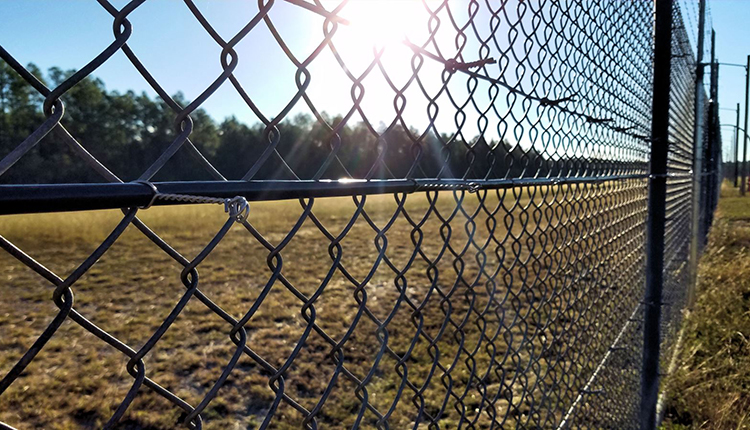Benefits of a Fiber Optic Security System for Modern Security Solutions
Benefits of a Fiber Optic Security System for Modern Security Solutions
Blog Article
Secure Your Residential Property With Dependable Fiber Optic Safety Solutions
In an age where safety and security dangers are significantly sophisticated, the requirement for reliable security remedies is critical. Fiber optic protection systems stand apart by supplying outstanding integrity and efficiency, leveraging advanced light transmission innovation to boost surveillance abilities. These systems not just provide resistance to electromagnetic disturbance but likewise assure long-term expense performance through decreased upkeep needs. The choice to spend in such a remedy involves mindful consideration of various elements. Recognizing the details of fiber optic security can illuminate the path to guarding your building better. What aspects should be checked out to maximize your investment?
Advantages of Fiber Optic Security
Fiber optic security remedies provide a series of advantages that make them increasingly essential in today's electronic landscape. One of the most substantial benefits is their premium bandwidth ability, which enables the transmission of large quantities of data over cross countries without significant signal destruction. This capability is especially advantageous for protection systems that count on high-def video surveillance and real-time tracking.
Additionally, fiber optic wires are naturally extra protected than traditional copper electrical wiring. They are immune to electromagnetic disturbance, making them less at risk to hacking or eavesdropping. This improved safety is critical for safeguarding delicate data and preserving the honesty of surveillance systems.
In addition, fiber optics are a lot more durable and immune to environmental aspects, such as moisture and temperature changes, ensuring long-lasting integrity and reduced upkeep prices. The light-weight nature of fiber optic cable televisions likewise streamlines setup procedures, enabling better versatility in system design.
How Fiber Optic Systems Work
In modern-day safety and security applications, the procedure of fiber optic systems counts on the concepts of light transmission through flexible glass or plastic fibers. These fibers are made to bring light signals over fars away with marginal loss, making them excellent for transmitting information connected to protection tracking. The core of the fiber, bordered by a cladding product, makes sure that light signals stay included within the core through a sensation referred to as overall internal reflection.
When integrated into security systems, fiber optic wires can transfer data from numerous sensing units, such as video cameras, motion detectors, and alarm systems, to a main tracking station. The high data transfer capacity of optical fiber permits for the transmission of big quantities of information simultaneously, making it possible for real-time monitoring and prompt feedback to prospective threats.

Kinds of Fiber Optic Safety Solutions
Different kinds of fiber optic safety services have actually arised to enhance security and protection throughout different atmospheres. One prominent remedy is fiber optic perimeter breach discovery systems (PIDS), created to monitor and protect residential or commercial property borders through the discovery of vibrations and disturbances along fiber optic cables. These systems supply real-time notifies, making it possible for prompt actions to unapproved gain access to attempts.
One more reliable solution is fiber optic video monitoring. This technology leverages high-definition electronic cameras connected through fiber optic cords to transmit video data over cross countries without considerable loss of top quality. This setup is especially valuable in expansive areas, such as flight terminals and commercial websites, where typical copper cables may fail.
Additionally, fiber optic sensors are increasingly used for environmental tracking, identifying changes in temperature, pressure, or acoustic signals that could show safety and security breaches or dangerous conditions. These sensors provide high sensitivity and accuracy, making them suitable for essential framework defense.

Installation and Maintenance Tips
Reliable setup and maintenance of fiber optic security remedies are vital for ensuring their optimum efficiency and longevity. Fiber optic wires must be routed firmly, avoiding sharp bends or twists that could endanger their stability.
Throughout setup, it is go now advisable to perform extensive screening of the system to verify that all components are working correctly. Normal upkeep checks should be set up to inspect the fiber optic wires for any indicators of wear or damage, in addition to to ensure that connections continue to be safe. Cleaning the adapters periodically is likewise essential to avoid signal loss as a result of dust or debris.
In addition, keeping an updated supply of installed elements and their specifications can help with less complicated troubleshooting and upgrades. By adhering to these setup and upkeep pointers, home proprietors can make the most of the performance of their fiber optic protection remedies, ensuring a dependable defense against prospective hazards.
Comparing Costs and Effectiveness
When examining fiber optic safety remedies, recognizing the balance between expenses and efficiency ends up being extremely important (security fibers). Organizations has to consider the upfront investment, ongoing upkeep expenditures, and the long-term value these systems provide. While fiber optic systems may require a greater first installment price contrasted to typical copper circuitry, their longevity and minimized sensitivity to electro-magnetic disturbance commonly equate to lower maintenance costs over time
Performance is an additional essential aspect; fiber optic safety systems supply boosted data transmission find more information speeds and boosted integrity. They can cover bigger distances without signal degradation, making them excellent for large buildings or remote areas. In addition, the high data transfer capability supports innovative protection applications, such as high-definition video security and real-time tracking, which are important for thorough safety management.
Inevitably, the option in between expense and effectiveness must be directed by details safety and security demands and run the risk of analyses. Organizations should assess their distinct needs, considering variables like home dimension, safety and security hazards, and technological improvements. By performing a comprehensive cost-benefit evaluation, stakeholders can make enlightened decisions that line up with their protection goals while ensuring a sound financial investment in fiber optic technology.
Conclusion
In verdict, fiber optic safety options provide substantial benefits in terms of efficiency, dependability, and immunity to ecological disturbances. Eventually, the fostering of fiber optic modern technology represents a forward-thinking approach to guarding buildings versus developing safety and security threats.
Report this page